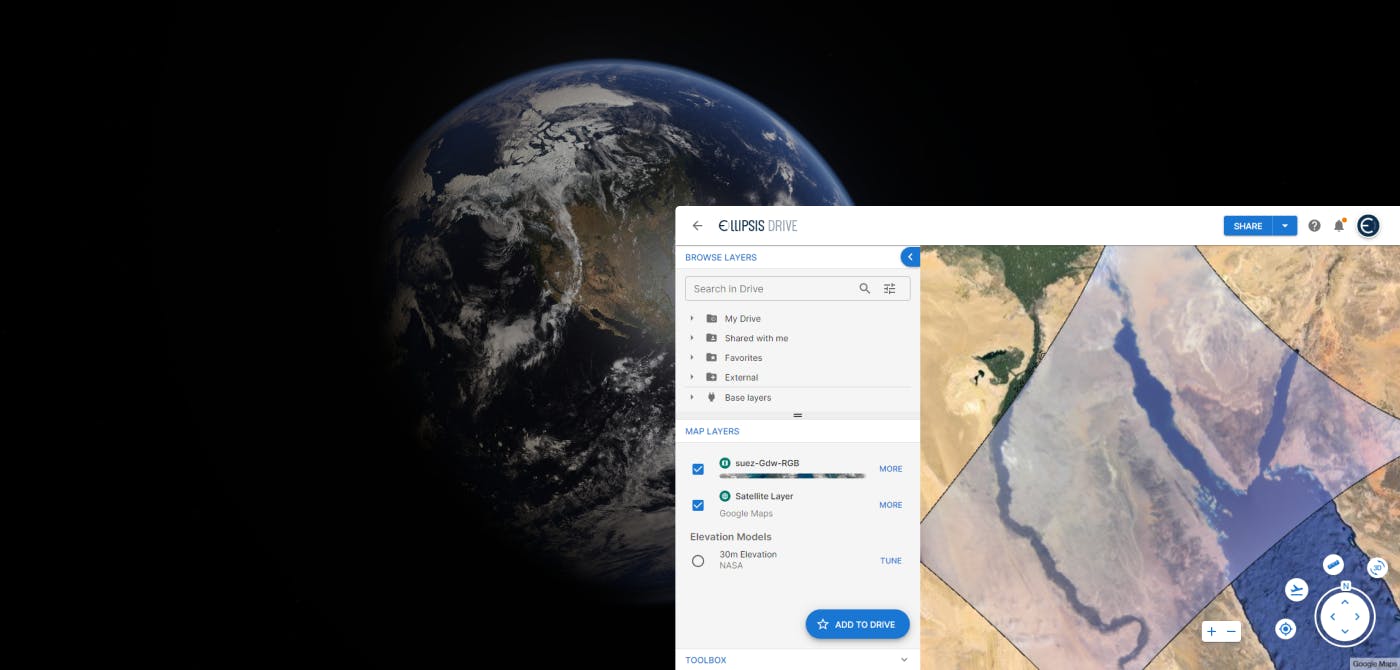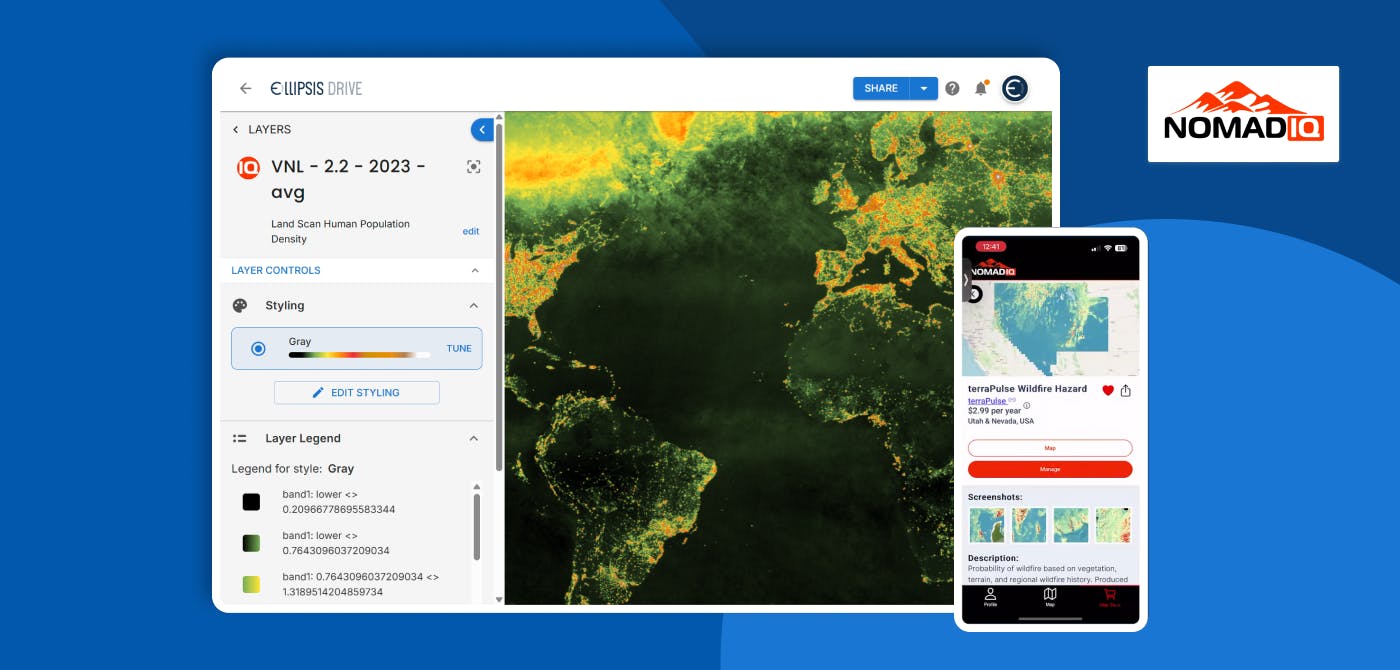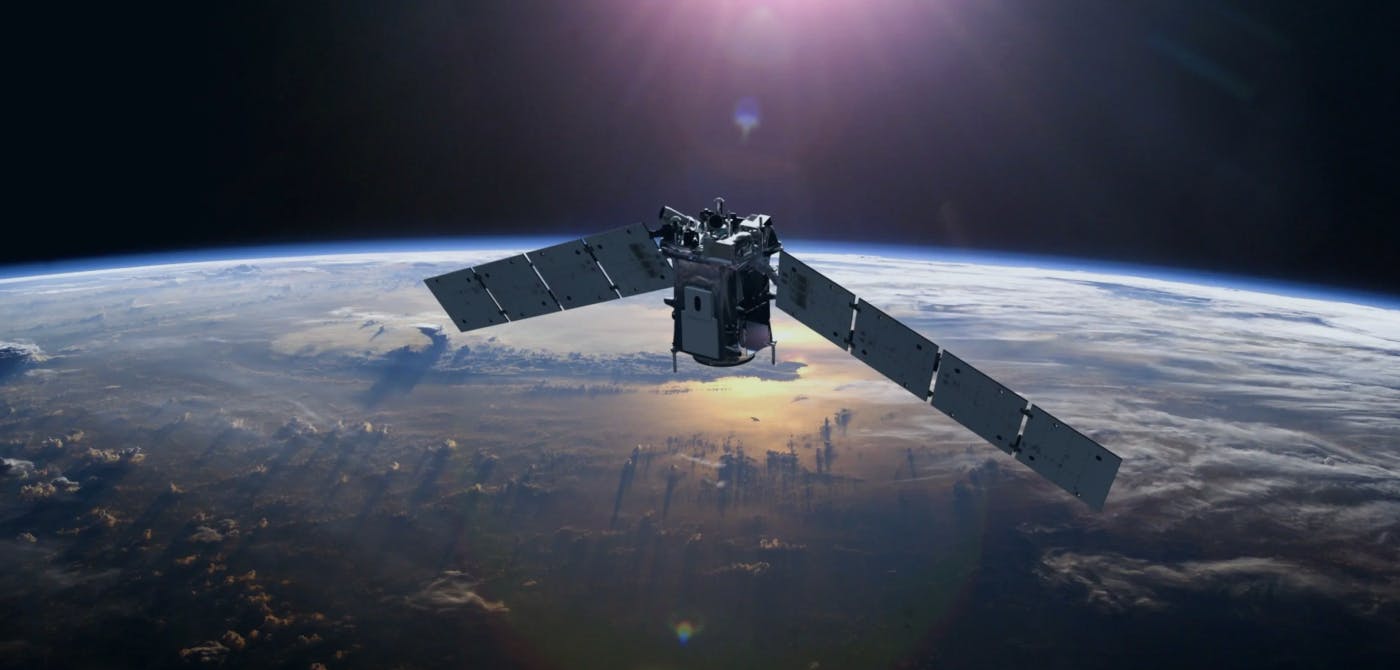Use Case
Earth Observation
Edge Computing Ft. SkyServe

Contents
Introduction
Instead of dealing with the entire haystack, wouldn't it be great to receive a bunch of needles directly to your doorstep? A commercial imaging constellation can generate over 100 terabytes of data every day. That’s a lot of hay to sift through to find what you’re really looking for. Even if you do find it (good luck!), is it even worth the cost and time investment? For a few use cases yes, but for the most part - NO!
We recently had the opportunity to host Adithya Kothandhapani, Co-Founder & CPO at SkyServe on The Ellipsis Drive podcast. SkyServe is an AI & Edge Computing technology company that can deliver real-time insights from space (check out the results from their latest mission here). Essentially, they help stakeholders sift through the aforementioned hay so end users are provided with their priceless needles.
Rosalie’s conversation with Adithya explored the concept of edge computing within the Earth Observation (EO) industry, the countless applications stemming from it, and the challenges surrounding it.
Let’s start off with the fundamentals!
What is Edge Computing?
Adithya started us off with a relatable analogy to explain the concept. “Consider the speed cameras that are used on highways. They have countless different sensors fitted in them. These speed cams are designed to identify perpetrators (for overspeeding, incorrect lane change etc.) and take immediate action. That action could be to notify a central office that is situated elsewhere, or in other cases, directly issue a ticket against the license plate holder. As you can tell, the processing of information needs to happen very close to the data capture, with minimum latency. That’s edge computing in a nutshell. Now replace the speed cameras in this example with EO satellite constellations. That’s the technology that we’re working towards - to deliver low latency edge computed insights from space.”
Edge computing is a distributed computing paradigm that brings computation and data storage closer to the location where it is captured. Instead of relying entirely on centralized cloud data centers, edge computing leverages local nodes, devices, or small data centers to perform tasks, process data, and provide services directly at or near the source of data generation.
These features, that define edge computing, can also be labeled as its benefits.
Proximity to Data Sources: Edge computing processes data at ‘the edge’ of the network, near the source of data, such as sensors on satellites, IoT devices, or user devices. This minimizes the distance raw data must travel before the first level of processing happens. This is beneficial because way less data will need to be transmitted to the next link in the processing chain, sparing networks and reducing latency.
Reduced Latency: As mentioned, by handling data locally or nearby, edge computing offers faster response times compared to centralized cloud computing. After all, it takes much less time and effort to send over a couple of needles than it would to send over an entire haystack. Reduced latency can be the critical game changer for applications requiring real-time or near-real-time processing. For example, applying edge computing to report a wildfire in near real time, makes effective human intervention possible.
Bandwidth Efficiency: Related to the above, reducing the need to transfer large volumes of data to a central server decreases bandwidth usage and can lower costs. Think of the stat mentioned at the beginning of this article. Just imagine how efficient things would be if 100 TB worth of data didn’t have to be transmitted on a daily basis. Processing data loads near the source opens up use cases that are not viable when thinking of the sheer amount of data that would need to be processed and transmitted. Think of monitoring our oceans. Remotely sensing the ocean for illegal activities is not attainable unless we use edge computing. It’s too much data (oceans are huge!). The better option is to only transmit data that could be relevant (for eg. IUU ships, floating debris, oil spills) in this context after initial onboard processing.
Security: Processing data closer to where it is generated can enhance security by reducing the volume of sensitive data sent over the network and potentially lowering the risk of interception or breaches.
Applications of Edge Computing
Before we talk about the applications of edge computing, let’s briefly talk about the status quo in the industry for some additional context. “The most bottlenecked part of the spatial data chain is getting the data from space to the computational hub on the ground. Obviously a satellite doesn’t know which pixels are more important than the other. So it sends the entire file, and the analysis at the ground station can’t begin until that transmission has concluded.” said Adithya.
To cite an example, a satellite constellation might send images all the way from the southernmost tip of Africa until Egypt. But the ground stations can only detect a potential wildfire in the forests of Nigeria a day or two later, after it has received and analysed the entire batch.
Not the ideal approach wouldn’t you agree?
Below are some of the countless applications of edge computing that address the issues highlighted above -
Wildfire Detection & Deforestation - Early signs of forest fire or deforestation can be detected by edge devices to prevent loss of forest cover and natural resources.
Gas Leakages - A leakage in a remote gas pipe is hard to detect in a timely manner due to the lack of human presence. It could be too late before people in the vicinity are sent a warning sign. Edge computing applied to satellite imagery that catches trace gasses solves this problem.
Ocean Monitoring - There are huge unsurveyed dark patches in the ocean beyond 50 miles off the shore. Edge devices can successfully monitor these areas for illegal fishing, contamination, pH level to prevent the loss of biodiversity.
The above is by no means an exhaustive list. The use cases stemming from edge computing are endless. That’s the beauty of it. Can you think of some more applications of edge computing that benefit your industry?
Challenges of Edge Computing
No new technological invention comes without its own set of challenges. If there are no new challenges to solve, that solution is likely just more of the same.
Edge computing truly came into the limelight as recently as 2018. Adithya highlighted some of the key obstacles that this niche technology is currently facing. “Like any young technology, one of the major challenges is that of awareness. Educating the user is critical. When we try to do business and introduce this new capability, users either overpredict what it can do and set the endeavor up for failure, or they undermine it for what it can’t do as of date.”
Aside from the above, there are some operational challenges associated with edge computing that need to be addressed -
Data Integration & Interoperability - Managing data from multiple edge devices and combining it with the existing cloud infrastructure requires careful planning and consideration. Ensuring interoperability in such a decentralized network can be a complex affair.
Scalability - Scaling up edge computed infrastructure to handle increasing amounts of data and (low latency) processing demands can be complex.
Data Compliance - Ensuring compliance with industry and country specific standards can complicate the deployment of edge computing solutions across international borders.
Conclusion
Edge computing represents a transformative shift in how (and where!) data is processed and utilized, particularly within the EO industry. By bringing computation closer to the source of the data, it opens up possibilities that were once classified as wishful thinking. However, it is still a work in progress that requires continuous innovation, education and a certain degree of openness to fully harness its true potential.
With 3 missions lined up in 2024, SkyServe is leading the way in delivering satellite-based edge computed insights to analytics companies, industry, and governments alike. More power to them!
We would like to thank Adithya for taking the time to share his viewpoints on the matter. We are confident that these insights and opinions, when heard and acted upon by other thought leaders, will create synergy and growth. Be sure to watch the full podcast here.
Until next time!
Liked what you read?

Subscribe to our monthly newsletter to receive the latest blogs, news and updates.
Take the Ellipsis Drive tour
in less than 2 minutes'
- A step-by-step guide on how to activate your geospatial data
- Become familiar with our user-friendly interface & design
- View your data integration options

Related Articles

Connecting Earth Observation Datasets to End Users Ft. NomadIQ
“From established basic research and government land management to growing demand in carbon markets, hazard insurance, and even recreational apps, there's a rapidly developing market for satellite-ba
5 min read

A Stable Infrastructure for Radar derived 3D Data Visualization
In the latest episode of The Ellipsis Drive Podcast, our CEO Rosalie van der Maas hosted jC Clark, a professional with over 20 years of experience in Insurance and Earth Observation (EO) entrepreneur
7 min read

Satellite-as-a-Service (Part 2): The New 'SaaS' in town
So… where were we? Ohh right, somewhere in space! Jokes aside, in the previous installment of this article series, we discussed the evolution of the SmallSatellite industry. We have established the sh
4 min read